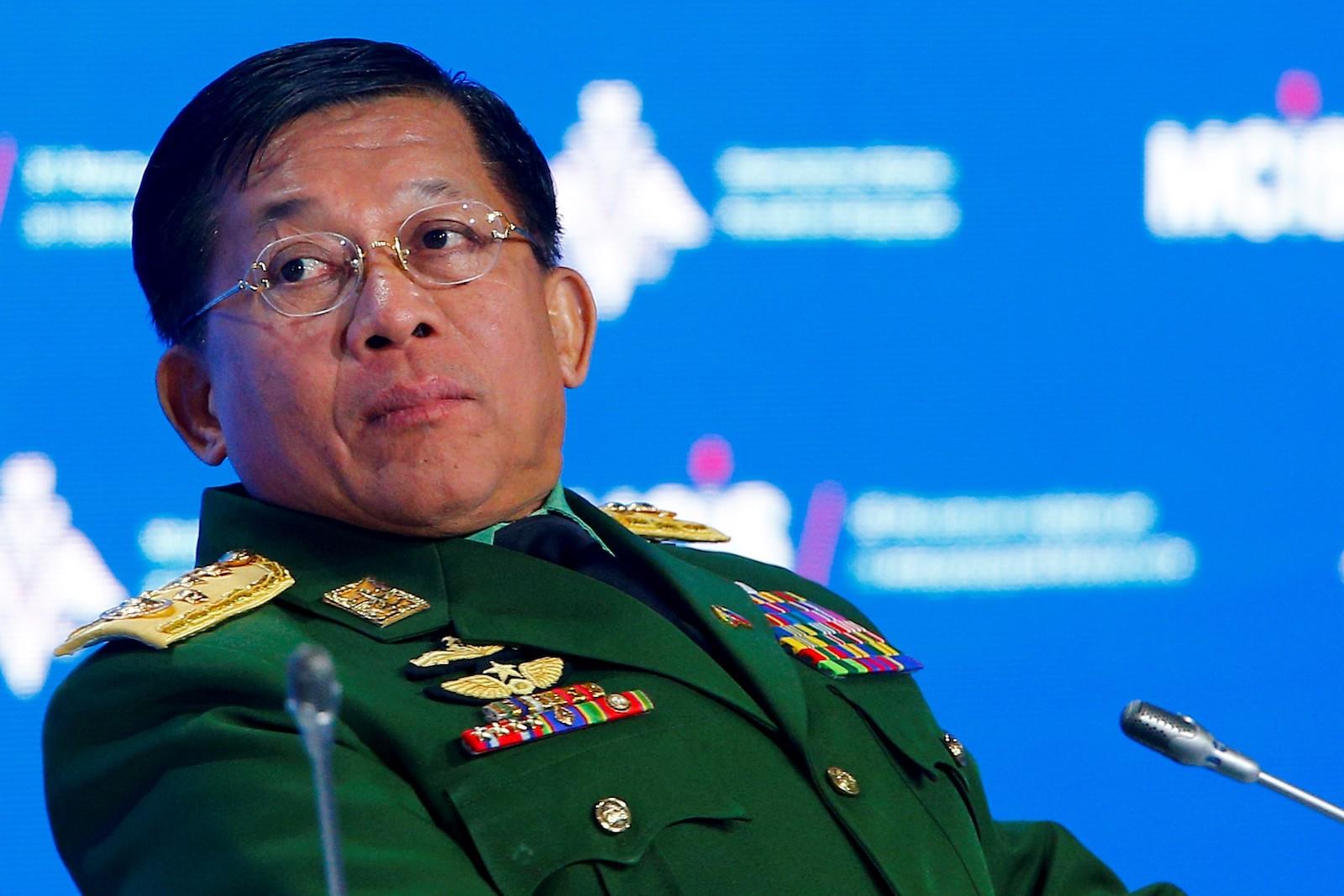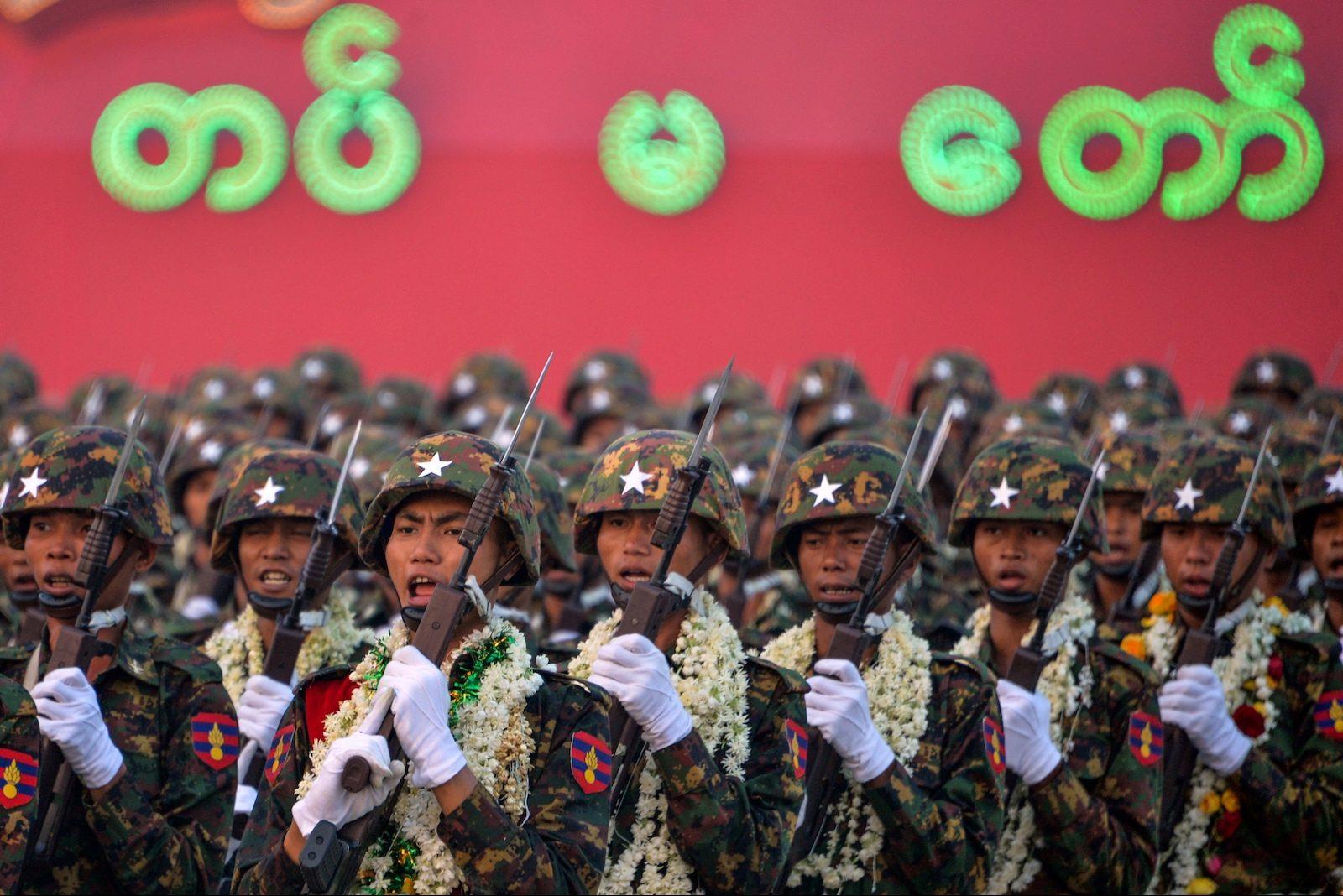(MENAFN- Asia Times) The Myanmar military staged its annual armed forces Day event today (March 27), celebrating its 78th year of destroying a country they have sworn to defend.
It's an opportunity for senior officers, serving and retired, to play dress up and watch human toy soldiers march in formation and affect strength by numbers and hardware. The phallic weaponry on display, all those missiles, artillery pieces and tanks, belies the reality that the increasingly flaccid army is falling flat in a grueling multi-sided civil war.
The self-delusional inner-core character of the Myanmar military thrives on evident contradiction. What presents as a modern military force in actuality is a neo-medieval army of occupation for whom war crimes against its own people are standard operating procedure.
But there must have been a little undercurrent of unease in the VIP stands during the parade that perhaps this time around the military miscalculated with the coup of February 2021. Will they make it to 80 and become octogenarian authoritarians? Nothing is certain as the military plunges deeper into the gravest domestic death match since its formation in 1945.
Like so much of the SAC's post-coup propaganda, the messaging around Armed Forces Day is repetitive, contradictory and often incoherent.
In the irony-free zone of military alternative reality, upholding the“Three Main National Causes” would get failing grades if taken literally:“non-disintegration of the Union, non-disintegration of the national solidarity, perpetuation of national sovereignty.”

Myanmar junta leader Min Aung Hlaing. Photo: AFP / Sefa Karacan / Anadolu Agency
As the latest in a short but squalid line of military dictators, the head of the military and post-coup State Administration Council (SAC) Senior General Min Aung Hlaing has presided over the greatest disintegration of the union since Independence.
His speech today repeated the tired tropes of state propaganda that the military needs to establish stability from multiple“terrorists”, including supposedly the opposition National Unity Government (NUG), is in itself an admission of failure that the post-coup revolt hasn't been contained.
The military has turned large parts of Sagaing, Magwe and Chin state into a wasteland using widespread arson, airstrikes and artillery to pummel armed civilian resistance groups into submission. That hasn't worked, and likely won't.
Outlandish claims of“effective control” by the NUG are grossly misleading and fuel false hopes but also downplay the immense suffering being endured by so many civilians.
There are rising incidents of military“massacres”, mass killings of civilians by the army on pacification operations including the murder of more than 20 civilians in Pinlaung in southern Shan state in recent weeks.
There are insipid arguments that such massacres are evidence of desperation and demonstrate the imminent collapse of the military. Related arguments that the military will not“massacre its way out” of the conflict are blithely ignorant of decades of violent Myanmar military state-building.
Just because the Myanmar military is losing, does not mean the resistance is winning. But with better command and control and interoperability, as outlined by Myanmar analyst Ye Myo Hein amongst others, the resistance coalition has a better-than-average chance of eventually prevailing.
Another“Armed Forces Day Objective” mentions“the restoration of the durable and perpetual peace across the nation as ceasing of armed conflicts is an actual requirement for realizing the multiparty democratic system.”
Only the smallest ethnic armed groups cling to the capsized Nationwide Ceasefire Agreement (NCA), or turncoats such as Yawd Serk and the Restoration Council of Shan State. Peace amidst this desperate conflict is impossible. To even attempt some form of reconciliation is courting disaster, and will directly benefit the military.
The third objective is predictably vague:“To safeguard the national interest of the State, lives and property of people, and to put a strenuous effort on respective corners in times of natural disasters” is one of those sniggering sops to civilian well-being from a regime that has driven the economy into the ground, gutted basic services and imperiled workers, farmers, bureaucrats and many of Myanmar's increasingly marginalized communities.
That is a further factor to anti-SAC resistance, the desperate living conditions of increasing numbers of people around the country. The SAC is banking on many people seeking basic survival over resistance, and they are correct. But it won't erase the simmering hatred the people feel towards the military for not just destroying a fledgling democracy, but also the economy and the national gains of the past decade.

Myanmar's soldiers march in a formation during a parade to mark the country's 74th Armed Forces Day in Naypyidaw on March 27, 2019. Photo: AFP / Thet Aung
The final objective is one of the ostensibly core reasons for the coup: the holding of“genuine” multiparty elections. The extension of the state of emergency on the second anniversary of the coup, and the imposition of martial law to some 47 townships, was a tacit admission that conditions were not conducive to even the sham simulacra of elections.
To date, the military captured Union Electoral Commission (UEC) claims that some 52 parties have re-registered to contest the sham elections: over 90 contested in 2020. This would ordinarily bestow some veneer of respectability to what is an otherwise zero credibility exercise in sham democracy.
Twelve of these parties will contest at a national level; the rest are state or region based. Many are small ethnic parties run by quixotic fantasists and opportunists who always seek opportunity in crises.
For many Myanmar people, these parties are ball-ma (ball fondlers) of the SAC, and not given much regard. The possibility for anti-election violence, when, or if, a date is finally set by Min Aung Hlaing, is a combustible reality. In the international community, the foreigner ball-ma, namely China, India, Russia and a few others, are the only states dishonest enough to bestow the fraudulent exercise any credibility.
As the parade winds down in Naypyidaw, there was little respite from the mass violence the military sparked with its coup. Fighting raged in southern Shan state, in Kayah, and the Thailand-Myanmar border town of Myawaddy, which was attacked.
That disjuncture between the way the military presents itself, the pretension of strength and honor and the reality of deception and sadism, has survived another year. The disintegration of the Union of Myanmar is inevitable, and Min Aung Hlaing is the agent of the collapse.
David Scott Mathieson is an independent analyst working on conflict, humanitarian and human rights issues.